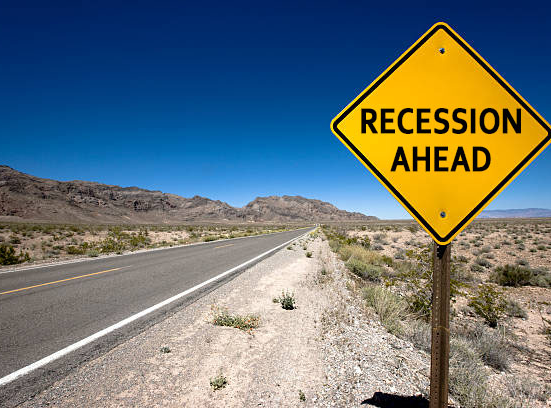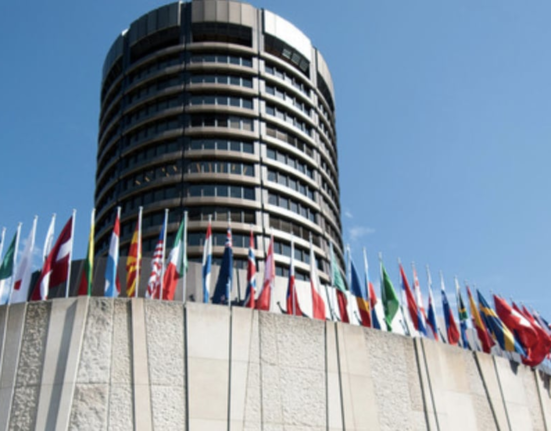As expected in the financial world, Federal Reserve Chairman Jerome Powell announced no interest rate hikes or cuts of banks. However, March’s Consumer Price Index (CPI) rose by 3.5%, surpassing expectations and accelerating inflation.
The sudden surge in inflation is exerting pressure on banking institutions, leading to visible strains such as the significant losses reported by New York Community Bank (NYSE: NYCB) and Softbank Group (OTCMKTS: SFTBY), which may necessitate intervention.
Responding to these alarming developments, consulting firm Klaros Group undertook a comprehensive analysis of 4,000 US banks to evaluate their vulnerability to failure.
Potential Issues:
- Financial Vulnerability: The report by the consulting firm suggests that a significant portion of U.S. banks, specifically 7%, might be facing financial difficulties that could lead to failure.
- Focus on Smaller Banks: The report highlights that these vulnerable banks are likely to be smaller institutions with assets less than $10 billion.
- Loan Risks: The reason for this vulnerability is attributed to exposure to risky loans, particularly commercial real estate loans. These loans could sour if property values decline or borrowers struggle to repay.
- Impact on Economy: Failure of even a small number of banks could disrupt the financial system and harm the broader economy.
Important Considerations:
- Severity of Risk: It’s crucial to understand the severity of the risk. Not all 7% of the banks are guaranteed to fail. The report likely indicates a level of elevated risk that needs attention.
- Precautionary Measures: Banks and regulators might already be taking steps to address these vulnerabilities and prevent failures.
- Health of Larger Banks: The report focuses on smaller banks. The health of larger banks, which are considered more stable, is not necessarily in question.
Table of Contents
What specific metrics did they use to assess the risk of failure?
- Capital Adequacy Ratio (CAR): This ratio measures a bank’s capital reserves relative to its risk-weighted assets. A higher CAR indicates a better buffer to absorb potential losses and improve the bank’s ability to withstand financial shocks.
- Non-performing Loan (NPL) Ratio: This ratio shows the percentage of a bank’s loans that are either in default or past due on repayments. A high NPL ratio indicates a significant risk of losses for the bank.
- Liquidity Ratios: These ratios measure a bank’s ability to meet its short-term financial obligations. Common ones include the loan-to-deposit ratio and the liquidity coverage ratio. A bank with low liquidity could struggle to cover withdrawals or meet its financial commitments.
- Profitability Ratios: Metrics like return on equity (ROE) and return on assets (ROA) measure a bank’s profitability. Consistently declining profitability could raise concerns about a bank’s long-term sustainability.
It’s important to consider these metrics together to get a holistic view of a bank’s financial health. Additionally, the consulting firm might have used other factors specific to their analysis, such as:
- Concentration of Loans: A bank with a high concentration of loans in a particular sector, like commercial real estate in this case, is more vulnerable to downturns in that sector.
- Management Quality: The experience and capabilities of a bank’s management team can significantly impact its ability to navigate financial challenges.

The results of the survey were concerning
Out of 4,000 US banks, 282 were identified as facing risks from commercial real estate loans and potential losses due to higher interest rates. Most of these banks are smaller institutions with assets totaling less than $10 billion.
According to Brian Graham, co-founder and partner at Klaros Group, these banks are under stress but not insolvent. However, their challenges could have subtle effects on communities and customers. Graham highlighted potential impacts like reduced investment in new branches, technology, or staff.
Former chair of the US Federal Deposit Insurance, Sheila Bair, explained that while individuals’ deposits are generally protected up to $250,000 per depositor per insured bank, the indirect consequences of small bank failures could still affect communities and customers.
The regional bank crisis seems far from over
Last week, US small bank cash reserves took a significant hit, dropping by $258 billion, falling below the level typically considered a constraint.
This figure doesn’t include the $126 billion still held in the Fed’s emergency lending program, which expired in March. This decline represents the most significant drop in bank deposits since April 2022, when $336 billion exited the banking system.
In a related development, regulators seized Republic First Bank on Friday, with plans to sell it to Fulton Bank (NASDAQ: FULT), another regional bank with $6 billion in total assets. The FDIC estimates that the failure will cost the fund approximately $667 million.

Diminished cash reserves and repeated government interventions indicate that the banking sector has significant weaknesses that could seriously affect the economy.
Here’s a breakdown of why it might seem far from over:
- High Levels of Bad Loans: Chinese regional banks, especially rural ones, have a higher concentration of bad loans compared to the national average. This indicates a continued risk of financial strain for these institutions.
- Slowdown in Economic Growth: A sluggish Chinese economy with declining growth rates could make it harder for borrowers to repay loans, potentially leading to more bad loans for regional banks.
- Property Market Woes: The ongoing crisis in China’s real estate market further complicates the situation. Many regional banks have exposure to the property sector, and its struggles could translate to loan defaults for them.
- Limited Resources: Compared to larger national banks, regional banks might have fewer resources to manage and absorb potential losses from bad loans.
Here are some additional factors to consider:
- Government Intervention: The Chinese government has been taking steps to support regional banks, including capital injections and mergers. However, the effectiveness of these measures in the long run remains to be seen.
- Pace of Reform: Restructuring and strengthening the regional banking system in China is an ongoing process. The speed and effectiveness of this reform will be crucial in determining when the crisis might be considered “over.”
Why hundreds of U.S. banks may be at risk of failure
Hundreds of small and regional banks across the U.S. are feeling stressed.
“You could see some banks either fail or at least, you know, dip below their minimum capital requirements,” Christopher Wolfe, managing director and head of North American banks at Fitch Ratings, told CNBC.
Consulting firm Klaros Group analyzed about 4,000 U.S. banks and found 282 banks face the dual threat of commercial real estate loans and potential losses tied to higher interest rates.
The majority of those banks are smaller lenders with less than $10 billion in assets.
“Most of these banks aren’t insolvent or even close to insolvent. They’re just stressed,” Brian Graham, co-founder and partner at Klaros Group, told CNBC. “That means there’ll be fewer bank failures. But it doesn’t mean that communities and customers don’t get hurt by that stress.”

Graham noted that communities would likely be affected in ways that are more subtle than closures or failures, but by the banks choosing not to invest in such things as new branches, technological innovations or new staff.
For individuals, the consequences of small bank failures are more indirect.
“Directly, it’s no consequence if they’re below the insured deposit limits, which are quite high now [at] $250,000,” Sheila Bair, former chair of the U.S. Federal Deposit Insurance Corp., told CNBC.
If a failing bank is insured by the FDIC, all depositors will be paid “up to at least $250,000 per depositor, per FDIC-insured bank, per ownership category.”
Learn more: https://gemini.google.com/app
Disclaimer ||
The Information provided on this website article does not constitute investment advice ,financial advice,trading advice,or any other sort of advice and you should not treat any of the website’s content as such.
Always do your own research! DYOR NFA
Coin Data Cap does not recommend that any cryptocurrency should be bought, sold or held by you, Do Conduct your own due diligence and consult your financial adviser before making any investment decisions!





Leave feedback about this